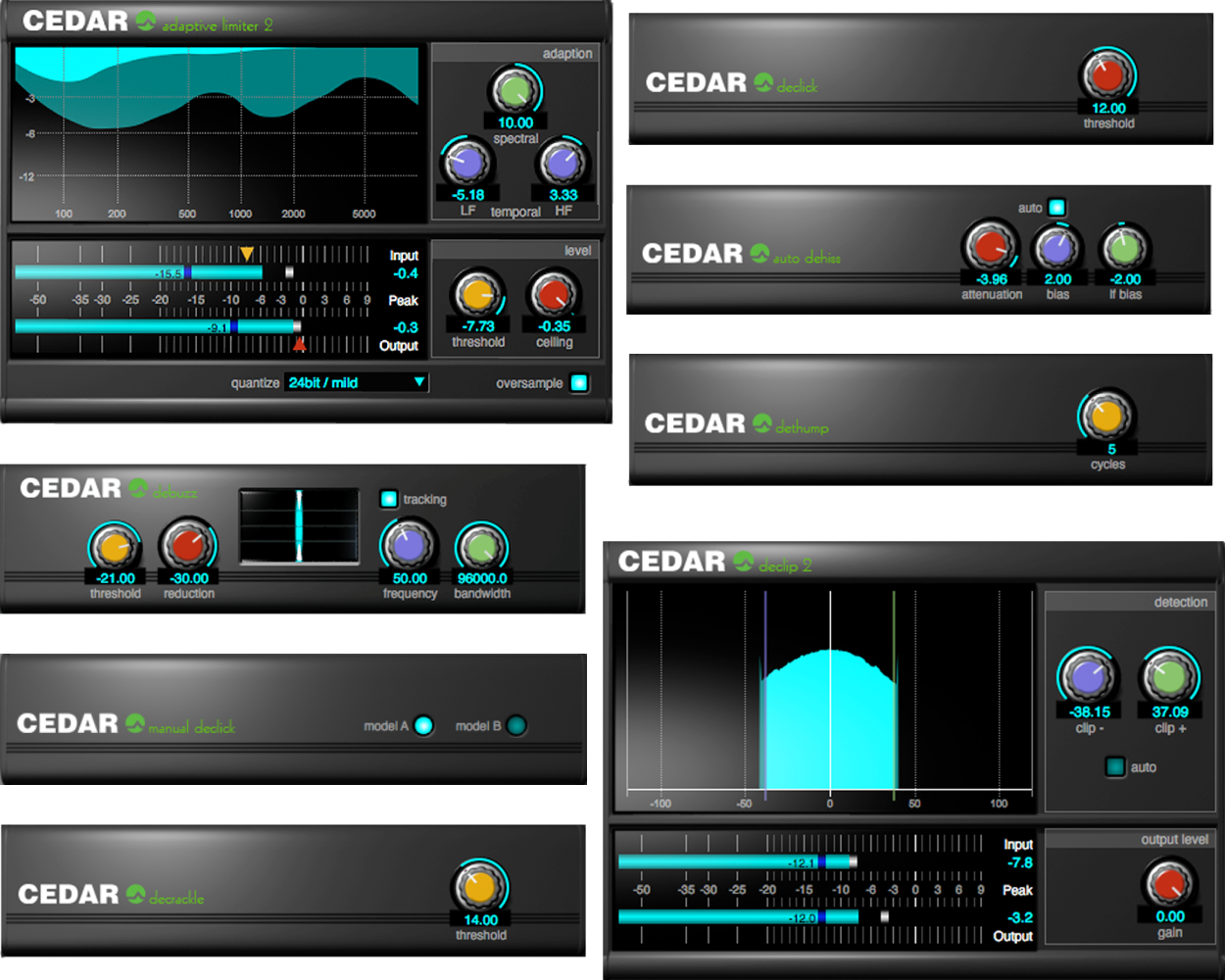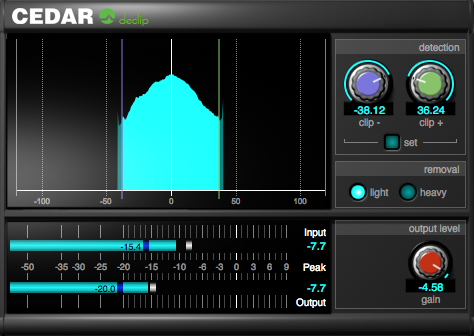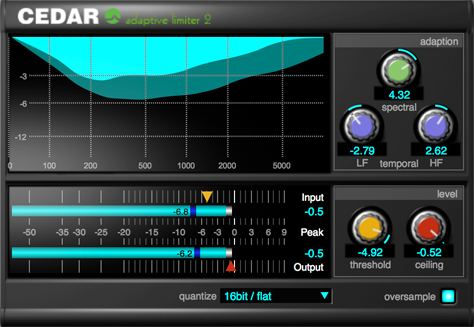
CEDAR has led the world in audio restoration since the 1980s, introducing features and capabilities that many claimed were impossible before we released them. Real-time digital declicking and decrackling? A CEDAR ‘first’.
More CEDAR ‘firsts’;
All of these were researched, developed and released first by CEDAR.
Today, we have combined eight of your favourite restoration processes into a single package: CEDAR Studio Restore. This allows you to remove a huge number of the problems that you’ll encounter, whether you’re transferring audio from old and damaged media, cleaning up soundtracks for film and TV, restoring material for broadcast, and much more.
$3,349.00
Available on backorder
Available on backorder

Declick offers better impulsive noise detection and a better interpolator than any other plug-in declicker. This results in superior performance across a wider range of material than ever before. Indeed, this performance is so good that, in most cases, it’s not possible to hear that the signal was damaged prior to restoration.

Decrackle boasts a remarkable ability to dig into the damaged signal to identify and remove all manner of ground-in and grungy crackle without damaging the wanted audio. It also removes many forms of buzz and some amplitude distortions from material ranging from cylinder recordings to current broadcasts contaminated with lighting buzz.

Manual Declick is ideal for restoring the extended scratches and clicks encountered on many audio media – film, tape or disk, whether analogue or digital. Its unique dual algorithms – optimised for long clicks and scratches – will remove noises such as those found on optical soundtracks, as well as drop-outs and extended digital errors.

Dethump eliminates the extended low-frequency thumps that cannot be restored using conventional declicking processes and filters. It replaces the unwanted sound with restored low frequency audio and is the ideal tool for removing many of the previously intractible problems associated with optical soundtracks, cylinders, 78rpm discs, and even modern recordings when, for example, microphones and stands are bumped.

Auto Dehiss embodies an advanced algorithm that is far less susceptible to the unwanted side-effects sometimes called twittering, glugging, the ‘underwater sound’, and even ‘space monkeys’. In short, it’s able to determine the broadband noise content and remove it without the introduction of these unwanted artefacts. A manual mode is also offered for fine-tuning the results when wanted.

Debuzz quickly and easily removes all manner of buzzes and hums with fundamentals as high as 500Hz, and it can eliminate unwanted signal components across the entire audio spectrum. It will track wandering tones and, unlike traditional filters, can successfully restore the audio without unwanted side-effects such as limited bandwidth or the hollow sound introduced by comb filters.

Declip 2 effortlessly removes clipped samples and reconstructs the original signal, improving clarity, eliminating distortion, and restoring the original dynamic range of the damaged audio. Our latest algorithm even tracks the clipping amplitude so that material that has later been processed with dynamics packages can still be restored.introduced by comb filters.

Adaptive Limiter 2 employs another unique algorithm developed by CEDAR that constrains the peak level of the output while retaining the integrity of the input. The result is a perfectly controlled signal that remains much more natural than audio processed using other limiters. It is also an unsurpassed loudness maximiser and, with its advanced resampling and noise shaping capabilities, is ideal for mixing, final mastering and other creative duties.